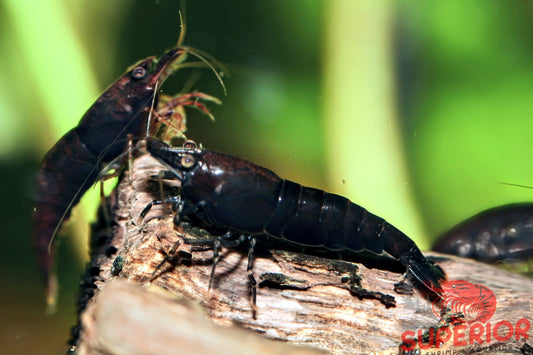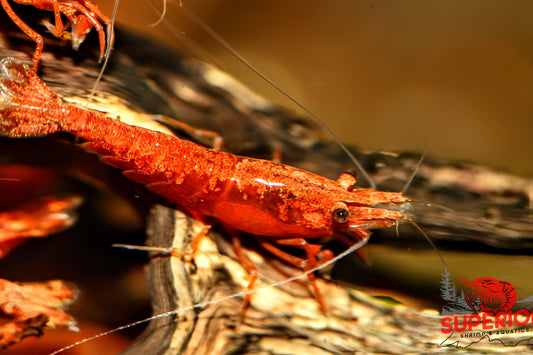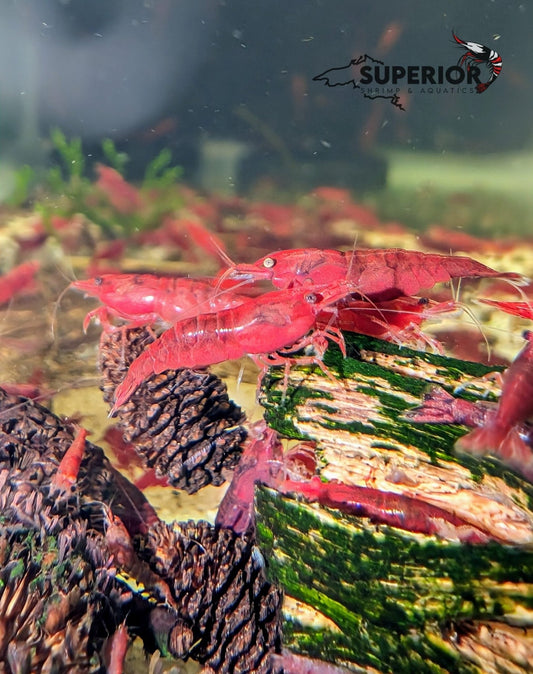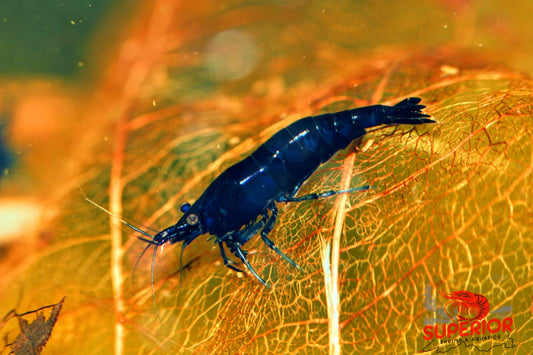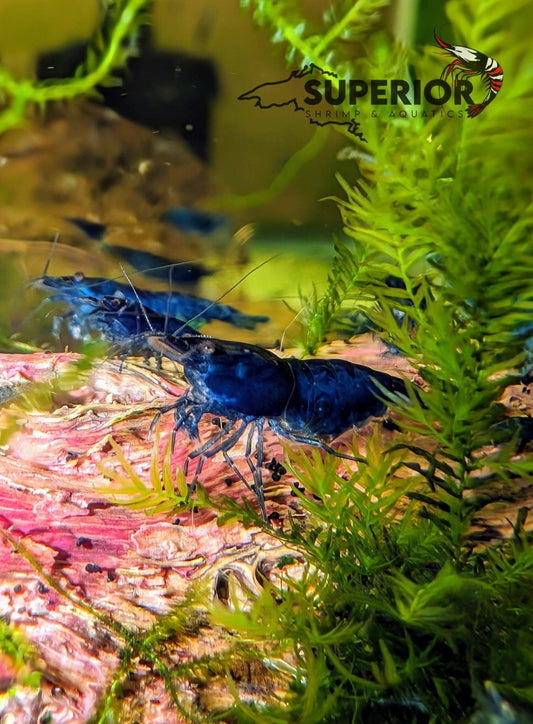Neocaridina davidi, commonly known as the cherry shrimp, has captivated aquarists around the globe for its vibrant coloration, ease of care, and fascinating behavior. As a freshwater ornamental shrimp native to Taiwan, Neocaridina davidi has become a model species not only in the aquarium trade but also in scientific studies of crustacean behavior, reproductive biology, and aquatic ecosystem dynamics. This article synthesizes current research from peer-reviewed studies and practical aquarium literature to deliver a thorough exploration of this remarkable species, ideal for new and intermediate aquarists.
Taxonomy and Natural Distribution
Neocaridina davidi belongs to the order Decapoda, family Atyidae, and is closely related to other dwarf freshwater shrimp like Caridina cantonensis. Originally endemic to rivers and streams in Taiwan, N. davidi prefers habitats with dense vegetation, leaf litter, and moderate flow. The species is eurythermal, tolerating a broad range of temperatures, which has aided its spread beyond native waters.
Through the ornamental trade and accidental releases, Neocaridina has been documented in naturalized populations across Europe, North America, and Asia (Feria & Faulkes, 2016). These populations, often found near thermal effluent zones, pose questions about the species’ ecological impact on native benthic invertebrate communities (read more).
Physical Appearance and Anatomy
The iconic red cherry shrimp is just one of many color morphs derived from the wild-type Neocaridina davidi, which appears translucent to brownish with subtle striping. Selective breeding has produced vivid strains in red, yellow, blue, green, black, and even rili (split-color) patterns. Color is regulated by chromatophores that reflect light, influenced by genetics, stress, substrate color, and diet (Vaz-Serrano et al., 2021).
Morphologically, the species features a segmented body comprising a cephalothorax and abdomen, with a rigid carapace, long rostrum, and compound eyes. It has ten walking legs (periopods) and five pairs of pleopods on the abdomen, used primarily by females for brooding fertilized eggs. The tail fan (uropods and telson) provides rapid escape movements, essential for predator avoidance.
Sexual Dimorphism and Reproduction
One of the first tasks for any shrimp keeper is distinguishing male from female Neocaridina. Females are typically larger, more rounded, and show greater coloration. They also possess a visible saddle, the pre-mating cluster of developing ova located behind the head. After mating, eggs are transferred to the pleopods, where they are aerated until hatching.
Reproduction is straightforward in captivity. Females molt just before mating, releasing pheromones that attract males. A typical female carries between 20 to 35 eggs, depending on age and health. Under optimal conditions, eggs hatch in 21–28 days, releasing miniature versions of the adult shrimp with no larval stage, which contributes to their success in both aquariums and invasive environments (UF IFAS, 2020; Santana et al., 2023).
Daily Activity and Shelter Behavior
The daily rhythm of Neocaridina davidi is influenced by light availability, sex, and reproductive status. A 2023 study by Santana et al. revealed that shrimp shelter preference varies with the time of day and reproductive condition. During the day, shrimp were observed to spend up to 88.8% of their time in shelters. At night, activity increased significantly, especially among ovigerous (egg-carrying) females, which moved more frequently in search of food while still seeking protective cover.
The study also highlighted substrate and structure preferences, showing that mosses such as Taxiphyllum were the most used shelter type, followed by driftwood and leaf litter. Rocks were the least preferred, possibly due to the lack of overhang or filamentous surfaces for grip and concealment (view study details).
These findings are invaluable for aquarists. Tanks should provide plenty of soft, plant-based cover such as mosses, ferns, and botanicals. Offering safe retreats reduces stress, especially during molting, mating, or egg-carrying stages.
Influence of Substrate on Behavior and Coloration
Another key environmental factor influencing shrimp welfare is substrate type. A study by Vaz-Serrano et al. (2021) evaluated how different colored and textured substrates affect Neocaridina davidi’s behavior and appearance. Shrimp displayed a strong preference for dark-colored, coarse-grained substrates, which mimic natural riverbeds.
Light-colored substrates, commonly used in some aquaria, reduced visible pigmentation and increased startle behavior. Notably, red morphs displayed more intense coloration against darker backgrounds—an insight that can benefit breeders looking to maintain high-grade shrimp lines (color morph study).
The same study found that shrimp on inappropriate substrate showed decreased exploratory behavior and increased hiding time, which may suggest elevated stress levels. This reinforces the importance of designing aquascapes that align with natural preferences to support shrimp health and coloration.
Molting, Growth, and Mineral Requirements
Molting (ecdysis) is critical for Neocaridina development. Juveniles molt frequently—sometimes weekly—while adults molt once every few weeks. Calcium and magnesium are key minerals required for exoskeleton formation. Inadequate mineralization can lead to molting failures, often fatal.
Shrimp mineral blocks, crushed coral, or cut cuttlebone can be used to maintain ideal hardness. A general guide for water parameters includes a GH (general hardness) of 6–8 and KH (carbonate hardness) of 2–5. A stable pH between 6.5 and 7.5 supports healthy molting and breeding.
Temperature plays a secondary but significant role. At 22–26°C (72–78°F), shrimp grow and reproduce optimally. Cooler temperatures slow metabolism and can extend lifespan, while warmer temperatures may accelerate breeding at the expense of longevity and stress tolerance.
Feeding Ecology and Tank Role
In both wild and captive settings, Neocaridina davidi serves as an algae grazer, detritivore, and biofilm consumer. In a well-established tank, they subsist largely on aufwuchs—the microbial film that forms on plants and surfaces. However, supplemental feeding is essential, particularly in high-density colonies.
Shrimp thrive on a balanced omnivorous diet. Quality commercial shrimp pellets, blanched vegetables (e.g., spinach, zucchini), and occasional protein sources (like bloodworms or decapsulated brine shrimp eggs) can be offered. Uneaten food should be removed within 2–4 hours to maintain water quality.
Shrimp act as ecosystem janitors, consuming uneaten food, breaking down leaf litter, and aerating substrate. Their bioturbation helps prevent anaerobic zones in planted tanks, supporting overall system health. However, they should not be considered a primary cleanup crew in overstocked tanks.
Captive Breeding and Line Management
Because Neocaridina breed so readily, it’s common for hobbyists to selectively breed for color intensity, shell coverage, and size. Selective breeding requires separating high-quality individuals from wild-type throwbacks, often using culling tanks to maintain genetic integrity.
Genetic drift can cause lines to degrade over time. To manage this, some breeders cross high-grade lines with wild-type stock to reintroduce genetic diversity before refining the desired traits again. This practice prevents inbreeding depression, which can lead to deformities and infertility.
If maintaining multiple color lines, they should be housed in separate tanks. Crossbreeding between different morphs (e.g., red and blue) often produces brown or wild-type offspring, reducing color purity in future generations.
Ecological Concerns and Invasiveness
While Neocaridina davidi is benign in aquaria, its presence in natural waters poses ecological challenges. According to a 2016 study by Feria and Faulkes, released shrimp have established stable populations in thermally modified habitats, such as those downstream from power plant cooling stations.
These populations can outcompete native macroinvertebrates, disrupt sediment structure, and potentially alter food webs. Their high fecundity, generalist diet, and ability to exploit human-modified habitats make them successful invaders. Aquarists should never release shrimp into local waterways. Instead, surplus shrimp should be rehomed, frozen (for humane euthanasia), or fed to predatory tank mates.
Conclusion: The Model Shrimp for Aquarists and Science
Neocaridina davidi is more than just a vibrant tank inhabitant—it is a model organism that bridges the worlds of ornamental aquaculture and crustacean science. With well-documented behavior patterns (Santana et al., 2023), substrate and color interactions (Vaz-Serrano et al., 2021), and global distribution (Feria & Faulkes, 2016), it serves as an educational gateway for new aquarists and a tool for ecologists exploring aquatic invasions.
Providing these shrimp with the right conditions—clean water, plant cover, dark substrate, and mineral support—ensures vibrant coloration and consistent breeding. By understanding their biology and behavior through science, aquarists can appreciate the full richness of what Neocaridina davidi offers.
Would you like me to generate a downloadable PDF, blog-ready HTML, or long-form SEO landing page from this text?
